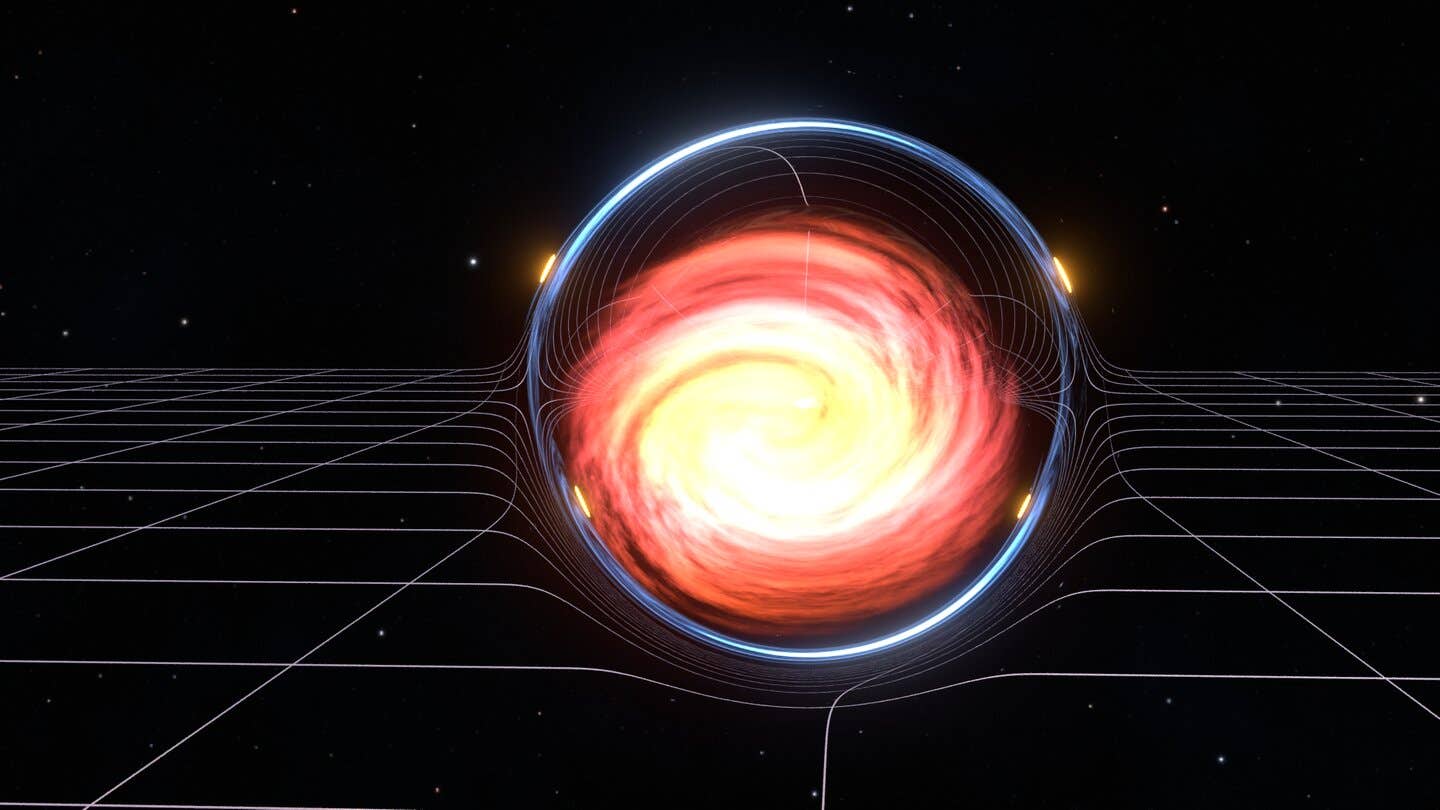A flash of light just redefined what we know about matter
A Konstanz team used ultrafast light to drive magnon pairs in hematite, shifting its magnetic “fingerprint” without heat.

 Edited By: Joseph Shavit
Edited By: Joseph Shavit

Laser light flips magnetism in common crystal, no heat required. (CREDIT: AI-generated / The Brighter Side of News)
A flash of light hits a simple iron crystal. In the space of a trillionth of a second, its magnetic behavior shifts, as if the solid briefly becomes something else. You might feel a jolt of hope reading that. If light can change matter this cleanly, your phone, your laptop, even a future medical device could run cooler and faster.
That is the promise behind a study from the University of Konstanz, where physicists led by Davide Bossini showed how laser pulses can reshape a material’s magnetic identity at room temperature. Their work, published in Science Advances, replaces heat with light as the main tool of control.
What Makes the Change Possible
The team uses “magnons,” which are ripples that move through the spins of electrons in a magnetic solid. Think of them like waves rolling across a sea of tiny bar magnets. By sending ultrafast laser pulses into hematite, a common iron ore, the scientists drive special pairs of these waves at very high energies. Those driven pairs then influence other magnetic waves in the crystal. The end result is a shift in the frequencies and amplitudes that define the material’s magnetic behavior.
“The result was a huge surprise for us. No theory has ever predicted it,” says Bossini. He adds that each solid has a unique set of resonant frequencies and that light can now modify that full set. “It changes the nature of the material, the ‘magnetic DNA of the material,’ so to speak, its ‘fingerprint.’ It has practically become a different material with new properties for the time being.”
Heat Is Not the Driver
Your first question is likely about heat. It is not the cause here. The group checked that by varying the laser’s timing and intensity, then measuring how little the sample warmed. The effect held steady.
“The effects are not caused by laser excitation. The cause is light, not temperature,” Bossini says. That matters, because heat slows chips, wears parts, and wastes power. A method that bypasses heat could unlock very fast, very efficient devices.
Why This Could Change Daily Tech
You live in a world flooded with data. Phones stream videos. Sensors watch traffic and weather. Artificial intelligence chews on everything. That surge runs into a wall inside today’s electronics. Electrons moving as charges leak heat. To push past that, many researchers hope to switch from charges to spins. Magnons, which are waves of spins, can carry information at terahertz speeds. They can also be steered by light and may generate less heat.
Until now, light mostly tickled the lowest energy magnons. That limited control and speed. The Konstanz team found a way to target the highest energy magnetic resonance by exciting magnon pairs. That move cascaded through the crystal and shifted the entire magnetic spectrum. In plain terms, the researchers learned to change the pitch and loudness of the magnetic “notes” that define a material.
A Common Mineral, A Rare Opportunity
The experiments used hematite. You may know it from jewelry or geology class. Sailors once used it in compasses. No rare earths were needed. No extreme cooling systems either. The work took place at room temperature, which matters if you care about cost and scale. What happens in a basic crystal could spread to more complex materials that power data centers or medical sensors.
The laser pulses last only femtoseconds. Each pulse is tuned near a high energy two-magnon mode and lands with surgical precision. A second beam acts as a probe. It reads tiny changes in the crystal’s reflected light, which reveal the spins’ motion.
When the pump is tuned “off resonance,” the magnetic waves behave normally. On resonance, their amplitudes jump and their frequencies shift. In some trials, shifts approached 20 percent for key modes. That is a large change for such a fundamental property.
A Human Angle, Beyond the Physics
If you live with a chronic illness, you know how heat can change your day. A wearable that warms your skin or a phone that throttles in the sun feels like a wall. The idea that light could steer quantum waves without heat speaks to comfort and dignity. Faster memory that does not burn your fingers matters. So do sensors that do not need bulky cooling. This study does not deliver those devices yet. It does give a new lever, one you could pull with light in real time.
Quantum behavior often hides at ultra-low temperatures. Here, the coherent drive of magnon pairs opens a path to quantum states at room temperature. The team argues that light could help create Bose-Einstein condensates of high energy magnons in everyday conditions. That would allow scientists to study delicate quantum effects without expensive cryogenics. It also hints at ways to nudge other complex systems, including those tied to superconductivity, using tuned light.
What Comes Next
The approach is simple in its ingredients and sharp in its control. It may extend to other magnets and to materials where magnetism and superconductivity intertwine. With new pulse shapes, polarizations, and frequencies, engineers could sculpt magnetic spectra on demand. That control could move a system toward a phase change, or pull it back, with a gentle flash.
Bossini sums up the shift in mindset. Every solid has many resonances. With the right light, you can reach them and rewrite the rules for a moment. That is enough time to switch, store, or send data at speeds that current chips struggle to match.
Practical Implications of the Research
Light driven control of magnetism at room temperature could cut heat in data processing and storage. Lower heat means faster devices that waste less power. That helps phones, laptops, and servers run cooler and last longer.
Tunable magnons at terahertz rates could support ultrafast memory and logic that surpass charge based electronics.
In health care, cooler and more efficient sensors and wearables could improve comfort and battery life. For science, the ability to access quantum states in common crystals without cryogenics lowers costs and opens the field to more labs.
The method may also guide new routes to room temperature magnon condensates and light tuned phases that relate to high temperature superconductors. Together, these gains support greener computing, better medical tools, and a wider door to quantum research.
Research findings are available online in the journal Science Advances.
Related Stories
- New laser technique reveals nearly 20 previously hidden states of matter
- Quantum liquid crystal: Scientists discover a new 5th state of matter
- SGroundbreaking Qudits simulate complex interactions between matter and force fields
Like these kind of feel good stories? Get The Brighter Side of News' newsletter.
Shy Cohen
Science & Technology Writer



